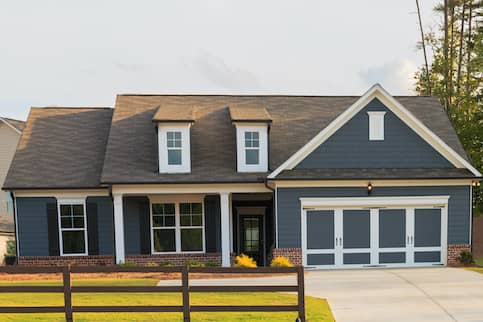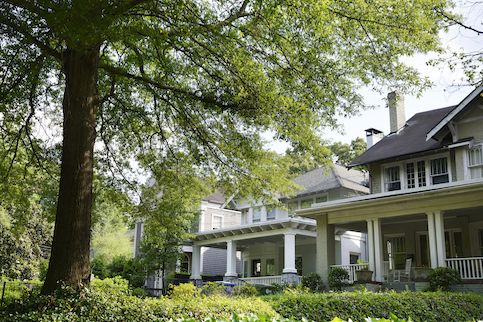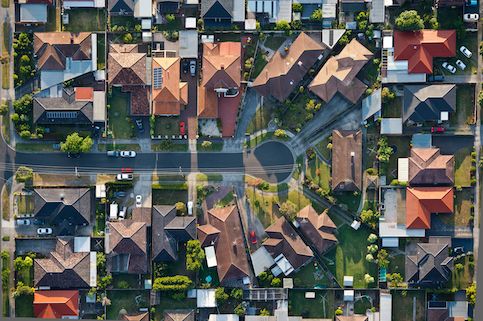Perhaps you’ve heard the names Fannie Mae and Freddie Mac, or simply “Fannie” and “Freddie,” mentioned when people talk about mortgages and the housing market. If you’re slightly familiar with Fannie and Freddie but haven’t taken the time to look into them, maybe you’ve at some point wondered what they are and what they do exactly.
To better understand both companies and how they support the mortgage market, we’ll take a close look at how they operate and impact the home buying process.
Fannie Mae And Freddie Mac, Explained
Fannie Mae and Freddie Mac are government-backed privately held mortgage companies originally created by the U.S. Congress. Known as government-sponsored enterprises, or GSEs, both companies provide liquidity, stability and affordability to the mortgage market. As a result, both Fannie and Freddie are pivotal to the country’s housing system.
Both Fannie Mae and Freddie Mac have nicknames derived from their full names: Fannie Mae from the Federal National Mortgage Association (FNMA) and Freddie Mac from the Federal Home Loan Mortgage Corporation (FMCC).
Freddie Mac and Fannie Mae play several key roles in the mortgage market, and we’ll describe these roles in detail in the next few sections.
Increasing Liquidity
Fannie Mae and Freddie Mac purchase mortgages from financial institutions that lend mortgages. They then repackage those mortgages into mortgage-backed securities to sell to investors on the secondary mortgage market.
Because Fannie and Freddie have taken the long-term mortgage debt off the lender’s books, the lender has more money available to underwrite mortgages. In turn, this helps more potential buyers become homeowners.
Setting Lending Standards
Since Fannie and Freddie are a big part of the secondary mortgage market, it’s in a lender’s best interest to be able to sell mortgages to them. However, Fannie and Freddie won’t buy mortgages unless they meet minimum underwriting standards such as the borrower having a minimum credit score of 620 and a debt-to-income ratio (DTI) of 50% or lower.
These standards create the framework for conforming conventional loans, which make up the bulk of U.S. mortgages. Encouraging mortgage lenders to conform to these standards helps set a benchmark for the industry and keeps excessive risk out of the mortgage market.
Supporting The Secondary Mortgage Market
By using mortgage-backed securities and guaranteeing on-time principal payments and interest on the mortgages, Fannie Mae and Freddie Mac entice investors to invest in the secondary mortgage market. The attractiveness of the secondary market results in more housing funds being available.
See What You Qualify For
Buy A Home
Discover mortgage options that fit your unique financial needs.

Refinance
Refinance your mortgage to have more money for what matters.
Tap Into Equity
Use your home’s equity and unlock cash to achieve your goals.
How Do Freddie Mac And Fannie Mae Stabilize The Mortgage Market In Times Of Crisis?
During the subprime mortgage crisis and housing crash of 2008, the collapse of the mortgage market and sudden loss of value on mortgage-backed securities caused Fannie Mae and Freddie Mac to suffer enormous financial losses.
As a part of a federal rescue plan, both GSEs received federal funds so they could keep lending. At the same time, Fannie and Freddie were brought under the conservatorship of the Federal Housing Finance Agency (FHFA). Fannie Mae and Freddie Mac quickly became two of the largest sources for mortgage financing, helping stabilize the housing market and protect lenders.
Later, during the COVID-19 pandemic, the Coronavirus Aid, Relief, and Economic Security (CARES) Act included provisions such as pandemic-related modifications, forbearances and deferrals for Fannie Mae and Freddie Mac mortgages. This helped protect millions of homeowners from the risk of foreclosure if the pandemic adversely affected them.
What’s The Difference Between Fannie Mae And Freddie Mac?
While Fannie Mae and Freddie Mac have a lot in common, they also have some key differences to be aware of. We’ll explore these below.
Original Purpose
Fannie Mae was created in 1938 by Congress to combat the lack of affordable housing after the Great Depression. It did this by buying mortgages from lenders, which freed the lenders from the debt that came with carrying those mortgages on their books. This in turn opened up lenders to offer more mortgages.
For the first few decades of its establishment, Fannie Mae remained a government-owned entity and monopolized the secondary mortgage market. To pay for other priorities, Congress turned Fannie Mae into a private company in 1968.
Instead of using taxpayer dollars to fund the newly private company, the government allowed Fannie Mae to sell stocks to shareholders as an initial public offering (IPO). When Fannie Mae was privatized, Congress created Freddie Mac in 1970 to provide competition and an alternative option for credit unions and smaller lenders.
Mortgage Sourcing
Another key difference between Fannie Mae and Freddie Mac is where they source their mortgages. While Fannie Mae tends to buy mortgages from larger commercial banks, Freddie Mac tends to buy from smaller banks, such as credit unions and community banks.
Credit And Down Payment Requirements
Fannie Mae and Freddie Mac have similar credit and down payment requirements for a mortgage to qualify and thereby be considered a conforming mortgage. However, the requirements for each differ somewhat.
Depending on your circumstances, it may be possible to qualify for a mortgage with Fannie and not Freddie, or vice versa, based on your down payment and credit.
How Fannie Mae And Freddie Mac Encourage Low-Income Homeownership
Both Fannie Mae and Freddie Mac offer mortgage programs to assist borrowers who earn a low-to-moderate income. This happens by Fannie and Freddie allowing borrowers to qualify for a mortgage with a down payment of as little as 3% of the home purchase price.
- Fannie Mae HomeReadyⓇ: This program is ideal for low-income first-time or repeat home buyers who have limited cash for a down payment. Borrower income eligibility limits depend on the area median income for the census tract that the property is located in.
- Freddie Mac Home PossibleⓇ: A Home Possible mortgage is available to all home buyers and has no income limits in low-income census tracts. Otherwise, the home buyer is limited to 100% of the area median income (AMI).
Both Fannie Mae and Freddie Mac offer additional assistance to first-time home buyers by maintaining a list of homes that they own – through foreclosure or deeds in lieu of foreclosure – and offer for sale at a discount.
The Bottom Line
Fannie Mae and Freddie Mac are government-sponsored enterprises that help provide stability to the U.S. housing market. As a home buyer, you should be aware of the role each plays in the mortgage process, especially when you’re considering the specific loan requirements you’ll need to meet.
Find A Mortgage Today and Lock In Your Rate!
Get matched with a lender that will work for your financial situation.

Victoria Araj
Victoria Araj is a Staff Writer for Rocket Companies who has held roles in mortgage banking, public relations and more in her 15-plus years of experience. She has a bachelor’s degree in journalism with an emphasis in political science from Michigan State University, and a master’s degree in public administration from the University of Michigan.












